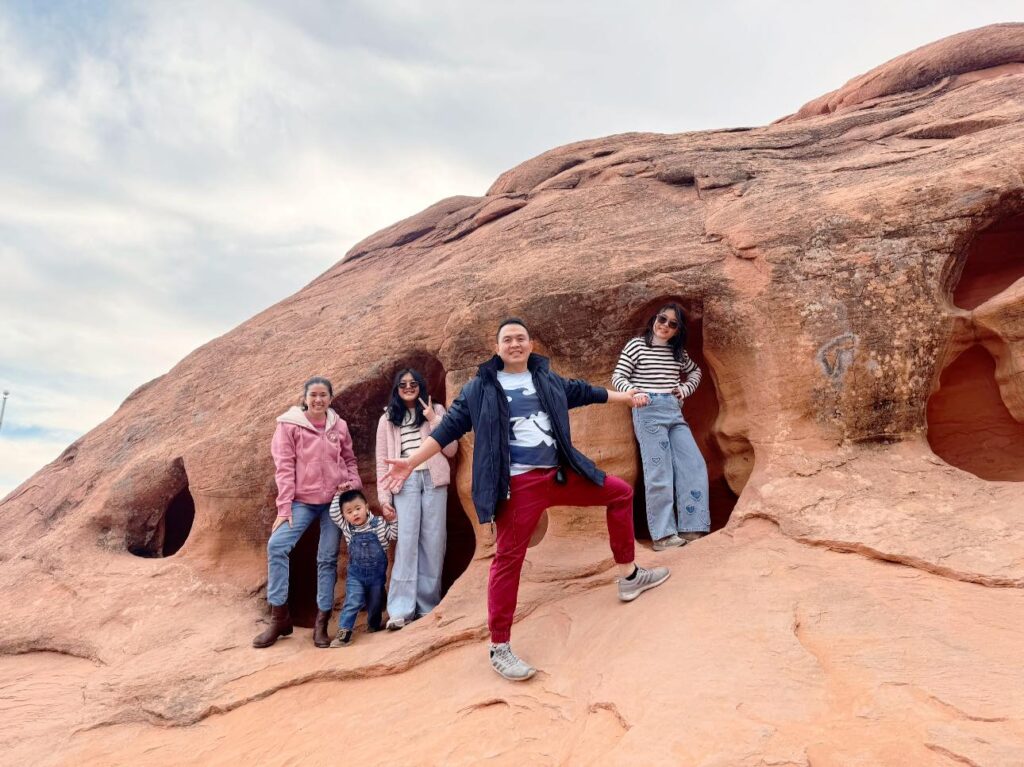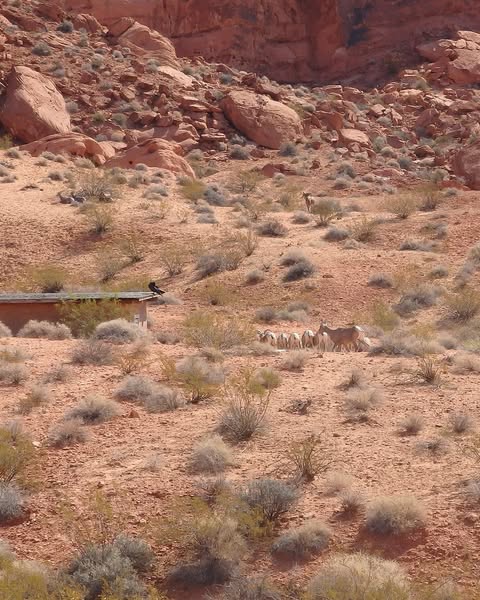Have you ever dreamt of exploring a desert landscape that seems almost otherworldly? That’s exactly what you’ll find at Valley of Fire State Park, a hidden gem tucked away in Nevada’s vast desert. If you’re someone who loves stunning landscapes, hiking, and capturing the beauty of nature through a camera lens, this park should definitely be on your bucket list. With its fiery red rock formations, unique wildlife, and breathtaking sunsets, Valley of Fire is an adventure waiting to happen.
In this article, we’ll walk you through some of the park’s most awe-inspiring features and provide you with stunning photos that showcase the beauty of this desert paradise. Ready to discover the hidden gems of Valley of Fire State Park? Let’s dive in!
A Glimpse into the Valley of Fire’s Rich History
Before we talk about the breathtaking views and hidden spots, let’s take a moment to appreciate the rich history that makes Valley of Fire so special. This state park, established in 1935, is one of Nevada’s oldest and most impressive parks. The name itself gives you a hint of the fiery red hues that dominate the landscape.
The park’s vibrant red rocks are not just visually stunning, but they also tell a geological story that spans millions of years. These rocks were once the bed of a vast inland sea that covered much of the region. Over time, the land rose, and the once underwater layers became the colorful sandstone formations you see today. As you explore, you’re literally walking through a page of history—geological, cultural, and natural.
The park is also home to ancient petroglyphs created by Native American tribes, including the Ancestral Puebloans. These images etched into the rocks offer a glimpse into the lives of those who once lived in this harsh but beautiful environment.
The Colorful Rock Formations That Will Leave You in Awe
When you think of a desert, you might picture dull, sandy landscapes with a few scattered rocks. But Valley of Fire is anything but ordinary. The park is famous for its dramatic and colorful rock formations, which are literally a photographer’s dream. The vibrant reds, oranges, and pinks of the sandstone formations contrast beautifully with the bright blue skies, making for some truly spectacular photos.
One of the most iconic formations in the park is the “Fire Wave,” a wave-like rock formation that looks as if it’s been painted with fiery streaks. This stunning feature is a must-see for anyone visiting the park. As the sun moves across the sky, the colors of the rocks change, creating an ever-shifting canvas that’s a photographer’s paradise.
Other notable formations include the Elephant Rock, which, as the name suggests, resembles the shape of an elephant, and the Beehives, which are a series of dome-shaped rocks that look like giant honeycombs. These formations offer some of the most Instagram-worthy spots in the park!
The Hidden Caves and Secret Trails Awaiting Your Discovery
Valley of Fire is not just about the rock formations—it’s also home to some incredible hidden caves and secret trails that many visitors overlook. These lesser-known spots are perfect for those looking for a bit of solitude and adventure away from the crowds.
One such hidden gem is the “Mouse’s Tank,” a small rock basin that’s filled with water during the wetter months. The surrounding area features petroglyphs that date back thousands of years. This secret trail leads you through narrow canyons and hidden alcoves, offering a chance to discover the park’s more intimate side.
Another lesser-known spot is the “Fire Canyon,” where a short hike will lead you to panoramic views of the surrounding desert landscape. The trail is relatively easy to navigate, but the payoff is worth it—an uninterrupted view of the valley’s fiery red rocks stretching out as far as the eye can see.
Wildlife in the Valley of Fire: A Photographer’s Paradise
Valley of Fire isn’t just a treat for your eyes, it’s also a great destination for wildlife photography. While the desert landscape may seem barren at first glance, it’s actually teeming with life. From elusive desert bighorn sheep to curious roadrunners and vibrant lizards, there’s no shortage of fascinating creatures to capture through your camera lens.
One of the park’s most iconic residents is the desert tortoise, a slow-moving creature that calls the park home. These ancient reptiles are often spotted sunbathing on the rocks, making for a great photo opportunity. Just be sure to give them plenty of space and respect their natural habitat.
If you’re into birdwatching, Valley of Fire is also home to a variety of bird species, including red-tailed hawks, kestrels, and desert ravens. Whether you’re an experienced photographer or just a nature lover, the wildlife in Valley of Fire will not disappoint.
Stunning Sunsets and Starry Nights: A Photographer’s Dream
One of the things that truly sets Valley of Fire apart is its breathtaking sunsets and starry nights. As the sun dips below the horizon, the sky transforms into a canvas of deep oranges, pinks, and purples, creating a stunning contrast against the fiery red rocks. The changing light conditions also make the rock formations appear to glow, as if they’re on fire.
For photographers, the golden hour (the time just before sunset) is the best time to capture the park’s beauty. The soft, warm light makes the red rocks appear even more vibrant, and the long shadows add depth and texture to your photos.
But the magic doesn’t stop when the sun sets. Valley of Fire is also a prime location for stargazing. Due to its remote location, far from city lights, the park offers some of the clearest night skies in Nevada. If you’re lucky enough to be there on a moonless night, you’ll be treated to a breathtaking display of stars, planets, and even the Milky Way.
Hiking Routes That Offer Unbeatable Views
If you’re an outdoor enthusiast who loves a good hike, Valley of Fire has a variety of trails that offer some of the best views in Nevada. Whether you’re looking for a short, easy stroll or a more challenging trek, there’s something for every level of hiker.
One of the most popular trails is the “White Domes Trail,” a 1.25-mile loop that takes you through a stunning desert landscape, past colorful rock formations, and through a narrow slot canyon. The trail is relatively easy but offers some of the best panoramic views in the park.
For a more challenging hike, try the “Fire Wave Trail.” This 1.5-mile round trip takes you through some of the park’s most vibrant rock formations and ends at the iconic Fire Wave formation. The trail can be a bit strenuous in parts, but the views are absolutely worth the effort.

Conclusion: Why Valley of Fire State Park Should Be on Your Bucket List
If you’re looking for a place that combines natural beauty, adventure, and rich history, Valley of Fire State Park is a must-visit destination. With its striking rock formations, hidden caves, diverse wildlife, and unbeatable sunsets, it’s no wonder that this park has become a favorite among photographers, hikers, and nature lovers alike.
Whether you’re exploring the hidden corners of the park, hiking its scenic trails, or simply capturing the perfect sunset photo, there’s no shortage of amazing experiences waiting for you at Valley of Fire. So, pack your camera, lace up your hiking boots, and get ready to discover the hidden gems of this desert wonderland.
5 FAQs About Valley of Fire State Park
1. When is the best time to visit Valley of Fire for photography?
The best times are during the golden hour—early morning after sunrise or late afternoon before sunset. These times offer the best lighting for vibrant and dramatic photos.
2. Can I photograph wildlife in Valley of Fire?
Yes, Valley of Fire is home to a variety of wildlife, including birds and lizards, which can make for unique and interesting photography subjects.
3. What equipment should I bring for Valley of Fire photography?
A DSLR or mirrorless camera with a wide-angle lens is ideal for capturing the vast landscapes. A telephoto lens is also useful for wildlife and distant shots.
4. Do I need a permit to take photos in Valley of Fire?
No, a permit is not required for general photography. However, if you plan to conduct commercial photography, you may need to apply for a permit.
5. What is the best season to visit Valley of Fire?
The spring and fall seasons are the best times to visit for photography, as the temperatures are more moderate and the lighting is ideal.

